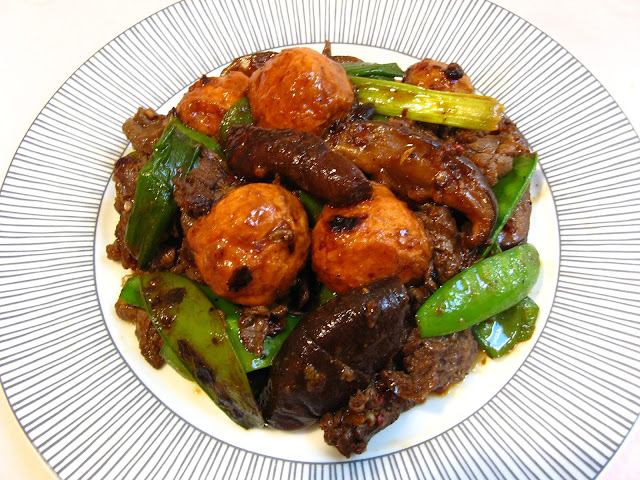I first had this dish at a Chinese restaurant and the dish
intrigued me since it was such a simple presentation. The pork stomach dish was
topped with heated oil and soy sauce just like a steamed fish, and the pork stomach
was very tender. The original restaurant dish only consisted of steamed pork
stomach (i.e. no vegetables) and was served within 15 minutes of ordering. Pork
stomach usually requires a long cooking time, so I started to think how this was
dish made, and how I could reproduce making it at home.
My first try at making this dish didn’t produce the results that
I experienced at the restaurant. Cooked pork stomach is available at my local
Asian market, so I thought that I could save time, just cut the cooked pork
stomach into strips, and steam it. The resulting pork was tough and required a
lot of chewing! So that wasn’t the answer. For my second attempt, I started
with fresh pork stomach (not cooked), and used a baking soda solution to
tenderize the pork stomach before poaching the whole pork stomach with ginger,
garlic, and Shaoxing wine. This turned out to be the solution. The baking soda
not only removes any (as is commonly said) unwanted smells, it also tenderizes
the pork stomach. The pork stomach needs to be submerged in a baking soda
solution (i.e. baking soda and water) to make it tender, so don’t just sprinkle
the baking soda on the pork. I added green beans to make a more complete meal
that can be made in one dish, but you can leave the vegetables out if desired.
The dish is topped with julienned ginger and green onions, together with heated
oil and a soy sauce solution, just like when making a steamed fish.
A pork stomach dish is usually not the first choice of most
people, but I think this dish will change your mind about eating this part of
the pig. The tenderness of the pork, together with the taste of the toppings, together
with heated oil and a soy sauce solution, reminded me of eating steamed fish.
So give it a try.
Enjoy!






